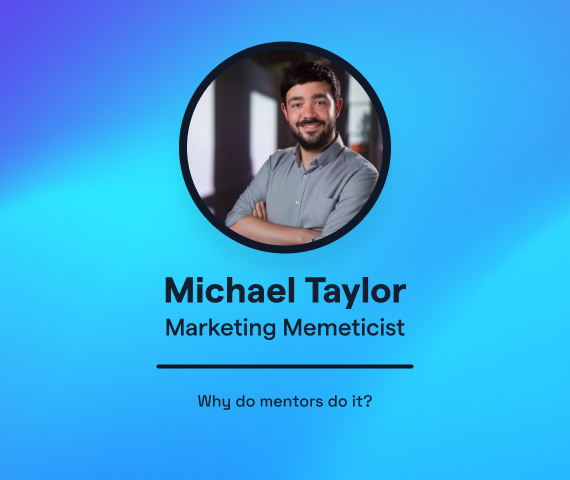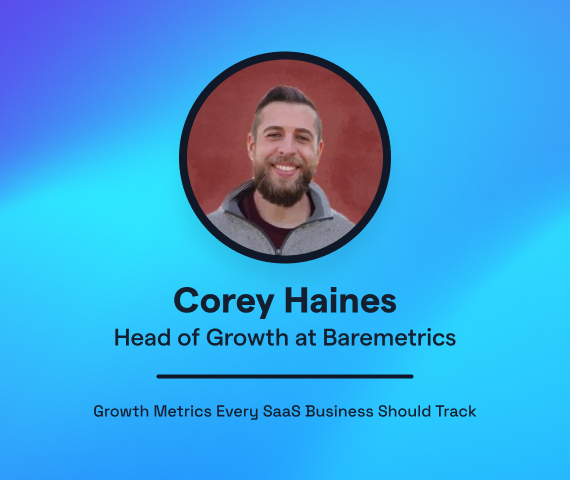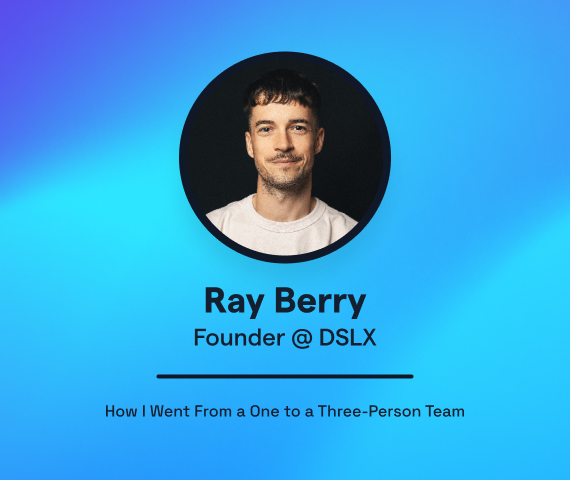Top 4 B2B SaaS Growth Challenges in 2024 – and How to Overcome Them
The Demand Conversion team conducted in-depth interviews with senior B2B SaaS marketing leaders to determine how companies are evolving their strategies for 2024.
Here are the top four challenges they uncovered and what they mean for your marketing efforts.
It’s no secret that B2B SaaS marketing has seen a massive shift in the post-COVID years.
It’s now possible for seven-figure deals to be closed without meeting prospects in person — something that was unthinkable for most companies just a few years ago.
Zoom fatigue now has its own Wikipedia page, with startups finding it much harder to get people to attend online events, webinars and demos.
And to top it all off, performance marketing costs have skyrocketed while budgets keep shrinking.
These changes (and all the others we don’t have time to cover) have left many marketers with playbooks that no longer deliver the same ROI — and a need to find new ways to engage audiences.
We spoke with dozens of marketing leaders to find out:
- What are the top B2B SaaS growth challenges they’re facing today?
- What are some ways we can adapt in response?
Here’s what we learned — and how you can update your tactics in 2024.
P.S. In this article, we cover tactics that are relevant for PLG (product-led growth), sales-assisted PLG, and sales-led growth.
Challenge 1: Supporting Longer Customer Journeys
With budgets being slashed everywhere and layoffs continuing into 2024, many companies continue to put software spending under a microscope.
According to Tomasz Tunguz, Venture Capitalist at Theory, the average startup sales cycle increased 24% from 60 to 75 days between early 2022 and 2023. As for Enterprise SaaS, the news is even worse, with cycles increasing by 36%.
But apart from the obviously difficult macroeconomic conditions, what’s causing these longer journeys?
- Increased Competition: The number of SaaS companies entering the market is enormous (30K in 2023 growing to over 70K in 2024, according to Statista).
- Shift in Mindset and Priorities: Companies are focusing more on cost saving vs having a growth-oriented mindset.
- Democratized Decision-Making: More stakeholders have a say in the purchasing process than before.
When we look at changes in B2B buyer behaviors in 2024, we’re also observing:
- Increasingly Informed Buyers: Prospects conduct more in-depth pre-purchase research before they even think about speaking to sales.
- Decision Paralysis: Buyers are swamped with choice — which products have a better user experience? Better features? Discounts?
- Higher ROI Threshold: Teams need to justify spend with specific, quantified outcomes.
As one of the marketing leaders we spoke with noted:
Marketers need to reassess their existing customer journeys and ensure the process is optimized for today’s buyers.
What This Means For Marketers
- Self-Serve: If your target personas now prefer to research on their own before speaking to sales, make sure they can easily access the information they want.
- Sales-Assisted PLG: On the other hand, if a pure product-led growth (PLG) motion / self-serve play isn’t working, look at experimenting with a sales-assisted touchpoint at the end of the journey to get them over the line.
- Buyer Personas: Understand the different buyer personas involved, their roles in the purchasing process, and what their specific pain points are.
- ROI: Help buyers understand the ROI value of your product (e.g. consider providing ROI calculators).
1. Should We Focus on 100% Self-Serve, or Looking At Sales-Assisted PLG?
Evaluate how your personas prefer buying.
Have these preferences changed post-COVID?
If you’re finding your buyers prefer researching more on their own, try expanding your self-service options.
Ask them how they want to consume information when it comes to learning about your product.
This might be short-form video, audio, or your traditional written guide.
Otherwise, are you observing a dropoff at the end of the journey, with prospects indicating that they’d be interested in speaking to someone before converting?
If you have both demo and free trial options in place and you’re seeing more drop-off than you’d usually observe, try using exit intent surveys.
Here’s one we ran on Hotjar recently for a demo page.
This is a great way to pinpoint (and get rid of) barriers to conversion.
2. Create Meaningful Conversations With Prospects Instead of Relying on Automated Cadences
Many ‘conversations’ with our buyers nowadays start and end with automated emails.
Whilst this can be a good way to nurture leads at scale, it doesn’t give us a lot of opportunity to adapt to what personas are actually thinking and feeling in the moment.
If you’re a prospect waiting on other decision-makers, getting an email that says, “Hey Lisa, can I get on a call with you to talk through our product features?”, isn’t very relevant.
It might even make you realize the vendor doesn’t truly understand how your company or industry works.
If you can address prospects with a more personal and tailored touchpoint, you’ll have a greater chance at engaging your prospect in a real dialogue – and even better odds at closing.
3. Create Sales Enablement Content for Each Persona
Does each persona know how this product can:
- Help them save time
- Help their daily role become a lot more efficient and easier
- Help their company make money / achieve their goals
- Help their company save money
Can this outcome be quantified and made specific?
On top of that, do you have materials that are able to be distributed around your buyer’s team and organization that showcase the business case?
Chances are, they might not have done your free trial or visited your website – even if they’re a key decision-maker.
Equip your champion to advocate for your business, and make sure they have the right resources to do so:
- The right business case proposals
- The right decks to show to their team
- 1-pagers to distribute
- Mini explainer videos
- Any other key materials you’ve identified in your research
Challenge 2: Standing Out in an Intensifying Competitive Landscape
Today’s B2B buyers are spoiled for choice, with new solutions popping up almost every day.
This saturation leads to analysis paralysis as it becomes more difficult to differentiate between products and evaluate which one’s right for a buyer’s specific needs.
So, what’s the key to standing out?
According to our study — hyper-tailored messaging to different buyer segments.
Most of the marketing leaders we spoke with acknowledged that their teams needed to get better at segmenting and tailoring their messaging and content — especially when it comes to tailoring value propositions and proof points to specific personas.
What This Means For Marketers
1. Nail Your Differentiated Value Proposition and Messaging
If you want a competitive advantage you can develop overnight, this is it.
Speak to your customers 1:1 and ask:
- Why did they choose your product against other competitors?
- What were their deal breakers?
- What exact messages did they need to see to be motivated to purchase?
By knowing your customers and their pain points inside out, you’ll get a differentiated ‘edge’ in your messaging that makes your storytelling stand out.
It’s also important to refresh your understanding of your ideal customer profile behaviors every 12-18 months, as they change over time.
2. Thoughtfully Segment Your Messaging
You may have multiple stakeholders and personas involved in your buying process.
But do you know which personas are the champions, which personas are the decision-makers, and what each needs to see before they feel comfortable purchasing from you?
From there, are you creating tailored messaging based on their different pain points?
Let’s say you’re an A|B testing solution, targeting marketers.
Although the marketing team are the ones championing the decision, there’s a high likelihood they’ll need technical sign-off from their CTO or IT department.
Their pain points in this scenario are quite different:
- The marketing team wants to run growth experiments and drive more leads / signups / demos. They want to be able to get the software up and running fast, and they want to do as much as they can without relying on developers / product support.
- A developer team, on the other hand, might be more concerned with how long the integration will take, and how smoothly the software can run and deploy on their website.
It’s important to ensure each persona has the right messaging and content to make them feel comfortable in moving forward to the next stage.
3. Showing The Right Proof Points to Each Persona
How are your target personas measured on their success? Can you connect your product solution to the different desired outcomes each persona wants to see?
Let’s say a marketer, product manager and developer are evaluating a translation solution. They all have different pain points to solve and are all measured on success differently.
- Marketer: Measured on the amount of new business generated.
- Product Manager: Measured on product engagement and retention.
- Developer: Measured on products and features being built and being deployed smoothly.
It’s key to tailor your landing pages, emails and sales content to these personas and their different criteria for evaluating and adopting your product.
Challenge 3: Leveraging Community-Led Growth
Online communities are becoming the new normal in B2B SaaS marketing.
All the marketing leaders we spoke to confirmed the value of these communities as “the new social media” – but very few have actually incorporated them into their demand generation strategy.
Marketing leaders identified five main barriers preventing them from taking advantage of this new trend.
Lack of Executive Buy-In
If management doesn’t understand the value of online communities in driving engagement and growth, it can be difficult for marketers to get the right resources and support.
Resource Constraints
Marketers only have so many hours in the day to get their jobs done. Add budget limitations on top, and community management just isn’t possible alongside their current deliverables.
Unclear Strategy
Community marketing is a very different beast to other channels. Unlike pure demand capture plays like Google Ads, online communities are all about engaging the 95% of buyers that aren’t currently in-market to purchase (but will be in the next few years).
Marketers need to understand how community-led marketing will fit into the existing marketing mix – and ensure their focus remains on brand awareness and education.
Difficulty Measuring ROI
Compared to other marketing channels, the benefits of community building are often long-term and not easily quantified. If your company doesn’t have self-attributed reporting in place, it will make it very difficult to track how community campaigns perform.
Overcoming Initial Inertia
Building momentum and encouraging active participation within a community is a big lift and a long-term play, which can be a deterrent. Creating your own active community will most likely take over 12 months to cultivate.
What This Means For Marketers
Here’s how you can successfully get started with online communities, based on our interviewees’ advice and our own experiences.
1. Secure Executive Buy-In
Present a clear business case to leadership, emphasizing the benefits of online community engagement. Try to include data and success stories that showcase the potential for generating leads, brand loyalty, and revenue.
2. Allocate or Hire Dedicated Resources
Designate a specific team member to nurture and engage with online communities, or hire a community manager. This is crucial for facilitating discussions and growing the community.
3. Engage in Relevant Communities and Provide Value
Figure out where your target audience is most active. Look at LinkedIn groups, industry forums, Reddit, or platforms like Slack and Discord that host professional groups.
Your engagement should be value-driven. Share insights, answer questions, and contribute useful content that addresses members’ needs and interests.
You’ll also want to encourage customers to share their own experiences and insights, as peer-to-peer interactions can be incredibly valuable for fostering loyalty.
4. Leverage Community Insights for Product Development
Getting feedback directly from your community not only helps align your offerings with customer needs but also gives your buyers a chance to contribute and feel a sense of ownership.
5. Offer Exclusive Community Content and Events
Rewarding your community with unique content or early access to features provides an incentive to stick around. This might include virtual events, webinars, AMAs (Ask Me Anything) – anything that offers additional value.
6. Measure, report, and integrate community insights
Track community engagement and report back to your leadership team. Focus on metrics like engagement rate, growth in membership, and the quality of interactions.
Share any insights across teams so you can harmonize your community engagement efforts with your overall demand generation and marketing strategy.
Challenge 4: Focusing on Lifecycle Marketing and Retention
Gone are the days of ‘growth at all costs’.
Now, as new sales slow down and SaaS customer acquisition costs have risen by over 60%, it’s critical (and more cost-effective) to focus on keeping existing customers.
- Retaining existing customers requires far less investment in marketing and sales efforts
- Once a customer’s acquisition costs are covered, future subscription revenue is mostly profit (and these customers often spend more the longer they stick around)
- Long-term customers are some of your best brand advocates, offering credible and influential word-of-mouth promotion
Of course, this is easier said than done. In 2023, we saw SaaS churn rates climb to a record high.
So in 2024, senior marketers will be looking for ways they can better nurture the company’s existing customer base and increase LTV.
What This Means For Marketers
1. Monitor Customer Health Scores
Focus on key metrics like usage patterns, support ticket frequency, and feedback scores. If you identify at-risk customers early on, you can intervene before they churn.
2. Offer Flexible Pricing and Plans
Adapt pricing options and plans that scale with customers’ evolving needs, supporting retention of your existing customer user base as their businesses grow and change.
3. Implement Retention Marketing Automation
Use automation tools (e.g. Klaviyo, Intercom) to send timely and relevant messages, reminders, and updates that keep customers engaged and informed.
4. Celebrate Customer Milestones
Acknowledge key milestones in your customers’ journey, whether it’s an anniversary, a significant achievement using your software, or an upgrade.
4 Key Takeaways for B2B SaaS Growth in 2024
- Understand how your buyers prefer to buy, and ensure you have the right resources to support their journey
- Know your customers better than anyone else and create hyper-tailored messaging
- Experiment with community-led growth
- Expand the LTV of your customers by focusing on lifecycle and retention marketing
For a deeper dive into the evolving dynamics of 2024 and how other marketers are changing their approach, be sure to check out the 2024 State of B2B SaaS Demand Generation Report.







